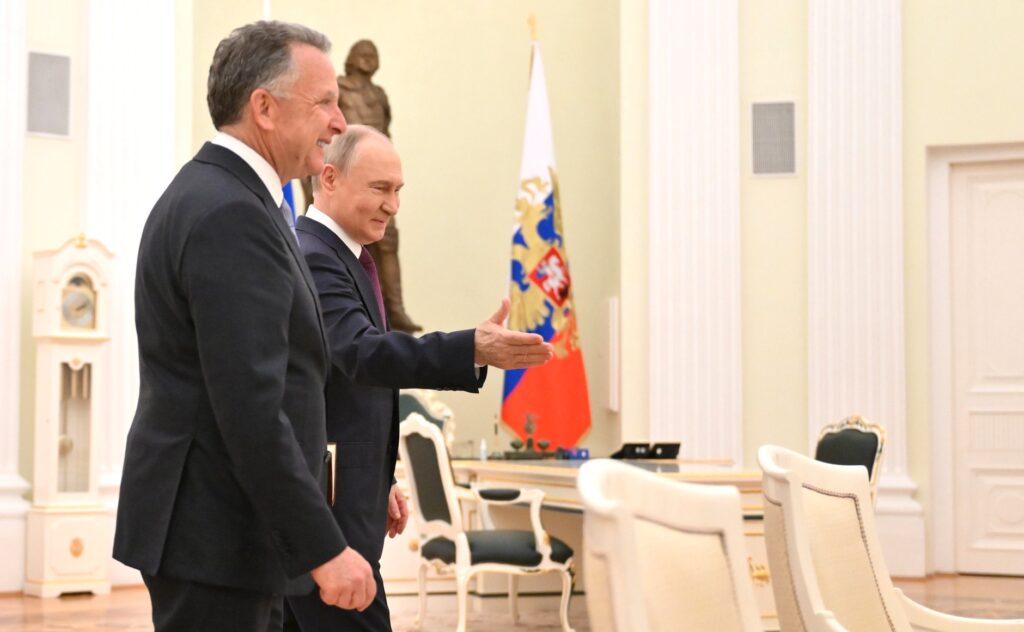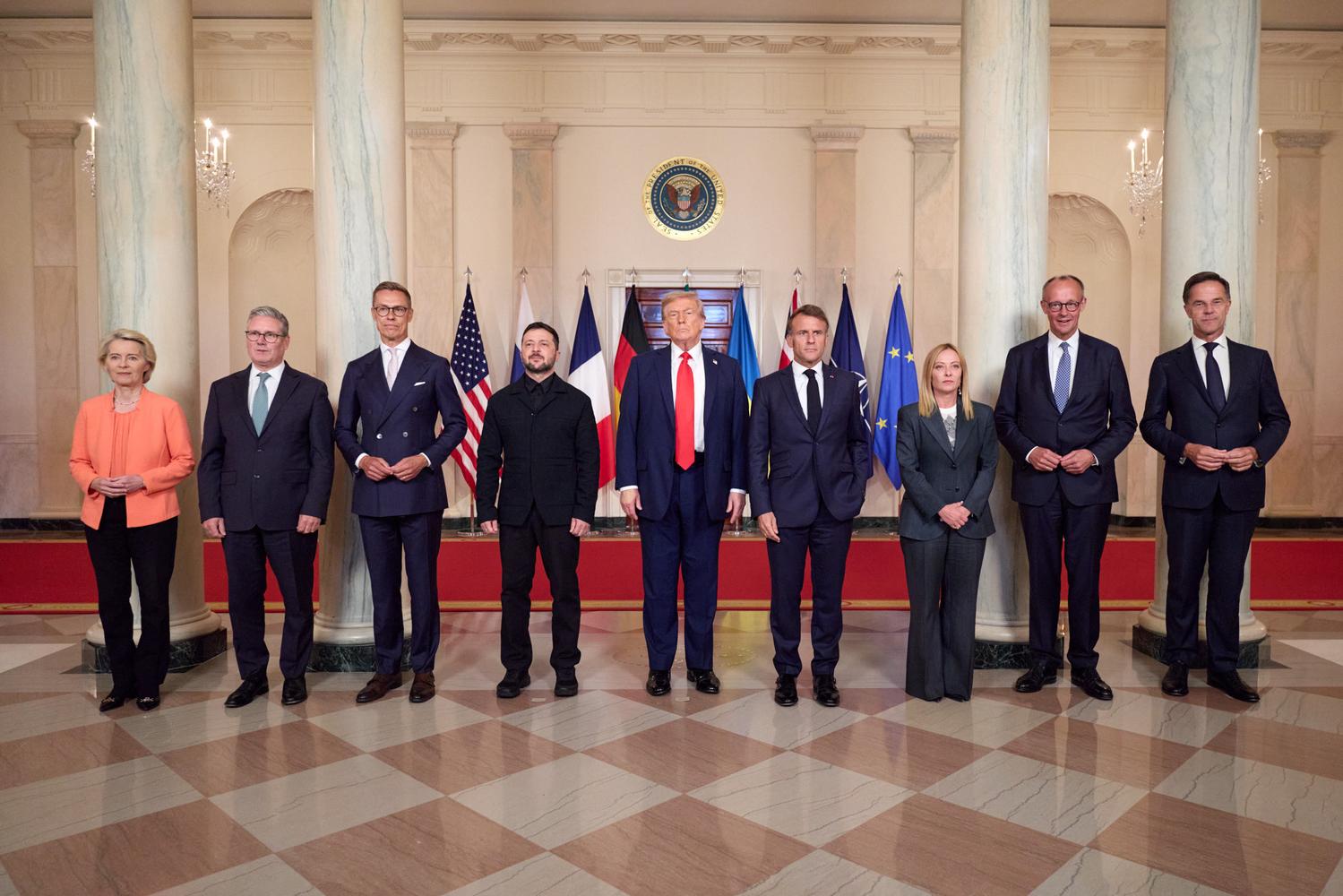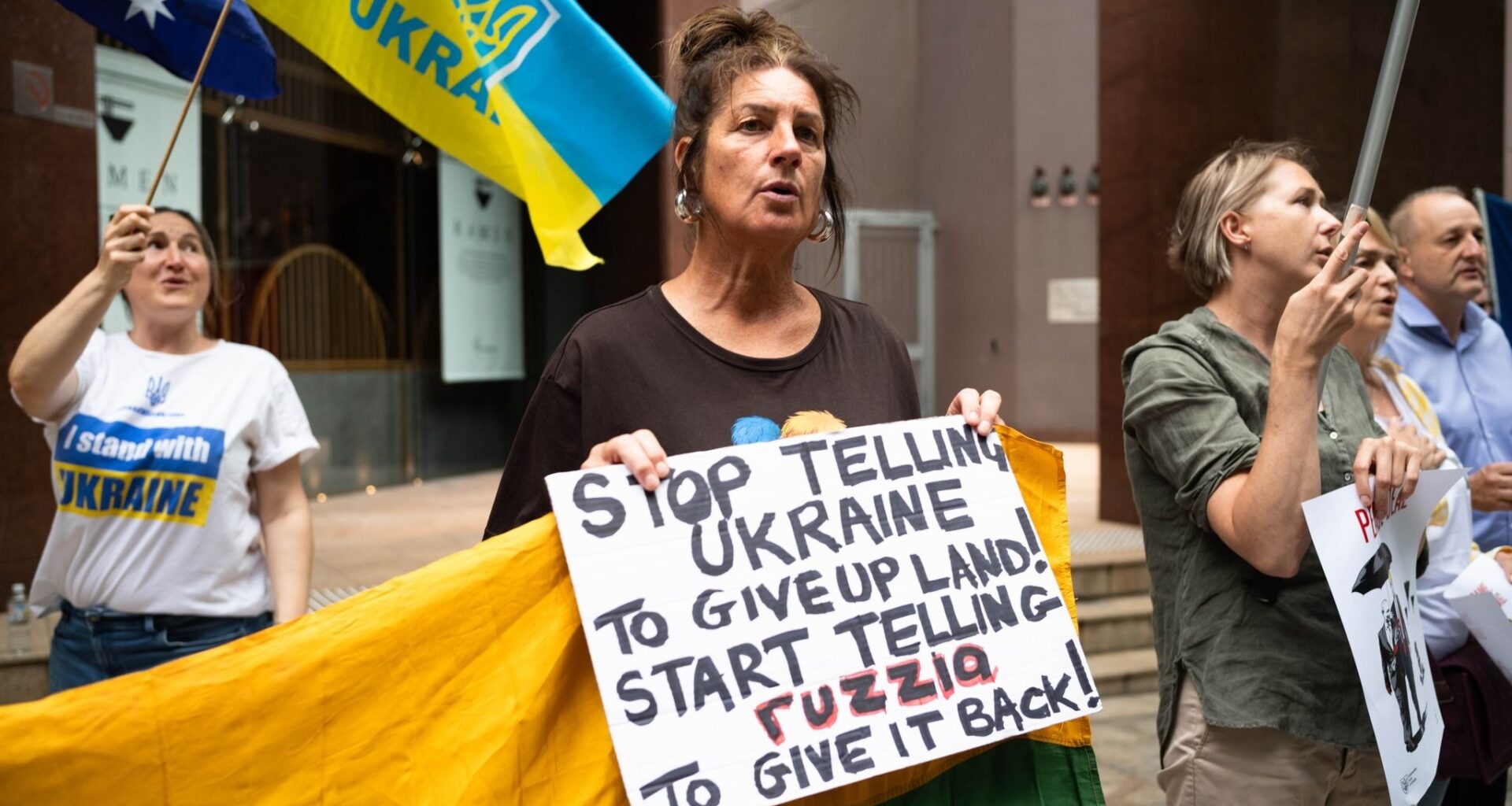It seems that Russia has played everyone again by using one of its tried and true strategies — manipulating public information and the current US government.
The so-called 28-point peace plan, which would be devastating for both Ukrainian and European security, has been presented as a default starting point since it leaked to the press last week.
Since then, the plan has been modified and whittled down after talks in Geneva, with both Kyiv and Washington saying they’ve made important progress. President Volodymyr Zelenskyy has welcomed the proposed changes.
Now, the Russians are meeting with Dan Driscoll, the US Secretary of the Army, in Abu Dhabi for their side of the negotiations. The hasty European counter-plan cobbled together in the past few days has already been rejected by the Kremlin.
US President Donald Trump initially gave Ukraine until Thanksgiving to accept the plan, or he would pull American support, including military intelligence, which would make it much easier for the Russians to capture territory and kill Ukrainians. He has since made comments suggesting that the deadline could be more flexible.
But Ukraine can still lose out.
“There was an attempt to force the US administration and Trump into trying to pressure Ukraine… and bring this proposal as a starting point,” said Lukasz Kulesa, the Director of Proliferation and Nuclear Policy at the Royal United Services Institute.
The reveal, which left European allies out of the negotiation, while making decisions affecting them, is part of Russia’s attempt to cut out as many stakeholders as possible, to deal directly with Washington.
Ukraine, which depends on US weapons and intelligence to resist the full-scale invasion, has had little choice but to play along and secure a least-bad resolution. The best outcome for Ukraine right now would be a return to status quo before the November peace plan was introduced, said Peter Feaver, a US political scientist with Duke University.
While it is possible for the talks to stall out and return to the status quo, it’s possible the situation could become worse for Ukraine, multiple observers have told Euromaidan Press. How much worse will depend on the Trump team’s unpredictable behavior.
“It's been a highly successful Russian information operation which has exploited not only Western media behaviors which Russia has always been adapted to doing, but also the incapacity of the current US administration to coordinate and to protect itself against this kind of manipulation,” said Keir Giles, a UK expert on Russia.
“The fact that the Russian proposal has now been widely established as a baseline from which negotiations should proceed, as opposed to being rejected outright, is a huge success for Moscow.”
Americans in disarray and disagreement
The original 28-point plan was reportedly drafted by Trump’s special envoy Steve Witkoff and Kirill Dmitriev, the head of Russia’s sovereign wealth fund.
The plan reportedly resembled one that the US has already rejected. Some US senators have said that this plan was "the wish list of the Russians" and not the American position. They attributed this directly to US Secretary of State Marco Rubio.
Rubio later denied these claims, saying the plan was based on input from both Russia and Ukraine.
According to the Washington Post’s reporting, Trump had limited awareness of the details of the plan but greenlit the proposal anyway. The Post’s anonymous source also spoke of “chaos” in the Trump administration, with various departments in the White House not knowing what was going on.
The plan was first provided to the publication Axios, before being picked up by news outlets around the world.
Russia tries out multiple levers in Washington

The reactions in the US were mixed.
“The pro-Ukraine faction within the United States does not like it… And they have been scrambling to try to undo or to shift the trajectory that we appear to be on, which was a take it or leave it in three days — surrender or else,” Feaver said.
“For the anti-Ukraine faction, this is overdue. They have wanted to impose a settlement on Ukraine for a long time. And they were teeing up to do that. The ambush of Zelensky in the Oval Office in the spring was designed to do that.”
Feaver said that both strong support for and opposition to helping Ukraine are minority positions in the US government, with the majority being somewhere in the middle, “persuadable either way,” which he said goes for both Republicans and Democrats.
The Kyiv Post cited sources in the US government, reporting there was a two-track foreign policy team in the Trump government.
One track is the traditional team, led by Rubio, which has moved cautiously, without putting out official plans and prioritizing multilateral negotiations that take into account Ukrainian, Russian, and American interests.
The other track is the “fast-moving” unofficial channel led by Witkoff. “Sources close to Witkoff not only confirmed that a full plan exists, but that it has already been delivered to both Kyiv and Moscow – even arguing that Witkoff has spent the past month quietly collecting views from both capitals.”

Russia reportedly had poor luck presenting their plan to the first track, then took it to Witkoff, who proved more receptive.
“We've seen it all before in terms of the use of back channels not just with regards to Russia but also in the middle in the Middle East and other places,” Kulesa said. “And the incoherence, when it comes to the work of the Trump administration.”
Europeans scramble to respond

The European leaders were just as blindsided by the news and scrambled to come up with a reaction.
European Commission President Ursula von der Leyen wrote that borders cannot be changed by force, that Ukraine’s armed forces cannot be limited, and that the EU’s centrality to securing peace for Ukraine must be fully reflected.
“Ukraine must have the freedom and sovereign right to choose its own destiny,” she said in a statement. “They have chosen a European destiny."
Nevertheless, the European allies have expressed their willingness to work with Kyiv and Washington. They stopped short of balking, calling the original draft a “basis, which will require additional work.”
They then created a rushed counter-proposal, which softens some of the harshest demands on Kyiv, such as the demand to give up the rest of Donbas to Russia. The plan also called for a ceasefire along the current front line and a security guarantee for Ukraine.
However, it still imposes an 800,000 limit on the Ukrainian military (up from the 600,000 in the original proposal), commits Ukraine not to try to reclaim captured territories, and provides for Russia’s reintegration into the global economy.
Trending Now
Even so, Kremlin aide Yuri Ushakov rejected this proposal, calling it “unconstructive.” Ushakov was a bigger fan of the US plan discussed in Alaska, saying that many aspects of it were acceptable to Moscow.
Europe as reactive as Washington
Observers have noted that this sequence of events was the repeat of a pattern in which Russia tries to set the pace of the discussion, the US abruptly jumps aboard, and Europe plays catch-up.
Part of the Europeans’ reaction could be attributed to their adaptation to Washington’s current volatility. Observers said that European leaders have learned not to overreact to initial hyperbolic messaging from the Trump administration, but demonstrating a willingness to work through it.
However, “European leaders have been delinquent in not recognizing this for what it was, and in accepting the Russian terms as a starting point as opposed to a blank sheet of paper to try to arrive at a workable and durable solution,” Giles said.
He cited the European leaders’ “absolute refusal… to take an active interest in their own defense and insert themselves in a relevant manner into the conversation about future peace in Europe.”
Kulesa would agree, calling it “a quick reaction to what was put on the table, which aims to amend or rectify the most dangerous elements of the (original peace) plan” concerning territory, NATO membership, frozen Russian assets, and accountability for war crimes.
He said the Russians oppose these rectifications and as such, wanted to freeze the Europeans out of negotiations, while keeping the diplomacy as bilateral as possible with the US.

Timing of the plan
The timing of Russia’s likely leak of the original plan is part of this.
“It's easy to explain the timing on Russia's part,” Feaver said. “They feel the wind at their backs and they think maybe now, we could impose something on them.”
The Trump administration is dealing with multiple political scandals at home, and Trump himself is no longer at the peak of his political power, as he was in the spring. The decision to pressure Ukraine may have been a gambit to distract attention or show off that the administration is able to achieve quick results in world affairs, observers noted.
This, plus the weakening cohesion inside his coalition created an opportunity for one of the factions to go for the “maximal gambit,” Feaver said.
Zelenskyy is also dealing with his own scandals, after news broke of the massive corruption scheme inside state nuclear operator Energoatom.
Ukrainian investigative journalist Yuriy Nikolov said Zelenskyy also had a good reason to shift Ukrainians’ attention away towards something that can make them “rally around the flag.”
“Unfortunately… this is a short-lived story because they’re tired of rallying,” Nikolov told Euromaidan Press. “And the current circumstance is far from ideal. That is, I don't think he'll get anything positive as a result of these negotiations in Switzerland or anywhere else, in terms of concluding some kind of peace deal.”
Nikolov added that the Zelenskyy administration is not known for its long-term strategic vision and tends to act “one day at a time.”
He said that with Russia’s rejection of the European counter-proposal, it’s likely that negotiations may already be functionally dead in the water.
However, this doesn’t mean that Ukraine won’t lose out.
Situation looks bad for Ukraine
What the Trump administration ends up doing remains unpredictable.
If a middle ground cannot be reached to both Ukraine's and Russia’s satisfaction — as Moscow’s reaction has shown to be likely — the negotiations may stall out inconclusively.
However, this does not necessarily mean a return to status quo. Trump is unlikely to climb all the way down from his demands, and may limit support or attempt to shift more of the burden onto the Europeans, Feaver said.
If, instead the Russians can convince the White House that they’re going to win regardless, it’s possible that the White House, eager for a win, may keep up the pressure, potentially going through with what they did in March — cutting off Ukraine’s intelligence.
The European allies have neither the budgets, the arsenals, the intelligence apparati, nor resolve, to fully make up for such a loss.
Alternatively, negotiations may continue. But if the parties involved continue to operate as though Russia’s original proposal is the starting point, Ukraine will very likely be the loser in this situation, while Moscow will gain.
And even if the negotiations come to naught, Russia knows a reliable mechanism to chip away at Ukraine’s bargaining power in the future.
“On each of these occasions where we go around this same merry-go-round, the situation gets worse for Ukraine and for Europe,” Giles said. “All the while, Russia's position is improving.”


